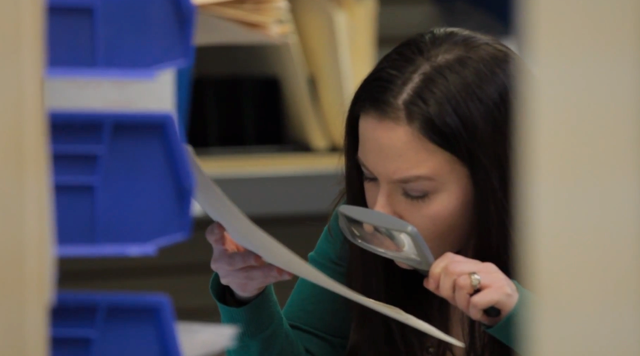Authenticating Art and Artifacts: An Introduction to Methods and Issues
By David Cycleback
“How do I know my artifact is real?”
A new eBook may help.
David Cycleback is an art and artifacts scholar working in the areas of identification and theory, and is an internationally known authentication expert with professional certification in museum sciences from Northwestern University. He is also the author of “Identifying Common Materials in Antiques: A Pocket Guide.”
This latest book, “Authenticating Art and Artifacts: An Introduction to Methods and Issues,” available as a free pdf, below, is an introduction to standard methods and issues in the identification and authentication of genuine art and historical artifacts and collectibles, and fake and forgery detection methods. This includes everything from ancient artifacts like pottery and arrowheads, to famous paintings, antique toys, currency, photographs and trading cards.
The downloadable 200-page pdf is laid out like a textbook, with clear definitions of the many tools authenticators use. Authenticating involves many aspects and perspectives, from science to connoisseurship, and this book is written for all those invested or interested in the topic, including scientists, museum workers, historians, appraisers, lawyers and connoisseurs.
It’s also written to be accessible to laypeople and students of any age, in easy to understand terms and with questions and fun exercises at the end of each chapter to cement what the reader has learned. There are also links to further research if the reader would like to delve deeper into a particular topic relating to authenticating.
From the naked eye to cutting-edge technology
The book covers the high-end, high-tech scientific tools available, but also discusses the simple observational methods available to anyone. Cycleback goes through the simple, preliminary considerations of the aging/wear/patina, materials and processes used to create the object in question; your five senses can be used in various ways for simple rule-outs (there are some vintage plastics that have a certain smell when rubbed or run under hot water, for example). Measuring weight and size, observing colors and textures, comparing temperatures and magnetism – all these techniques can be done by pretty much anyone wondering about an object’s authenticity as an artifact.
Cycleback also introduces readers to more advanced scientific tests and equipment used in authenticating, including radiometric dating to measure age, thermoluminescence testing to date when items such as ceramics were last heated, and spectroscopy to identify chemicals and compounds in a material.
But science alone cannot prove authenticity. As some old processes can still be used today, a process may be consistent with, but not proof of, an item originating from a specific period. For example, an original Rembrandt painting would be an oil painting, but artists today still make oil paintings. Artists still make hand-blown glass the same way it was made centuries ago. This is why supplemental tests and historical/stylistic knowledge are important. Science must work together with connoisseurs, aficionados and historians, who can evaluate aspects that clinical tests cannot. “Due to their hands-on experience and keen interest, collectors are often as knowledgeable as academics in a specific area,” Cycleback asserts.
In trying to replicate one particular quality, forgers often sacrifice another quality, which gives them away. For example, a great looking, computer-printed baseball card gives itself away when put under magnification and the paper and ink properties are revealed. As Cycleback writes, “the paradox with printing technology and the duplication of old prints is that the more closely it looks like the original at the naked eye level, the less it looks like the original at the microscopic level.”
‘based on knowledge, experience… and common sense’
No matter the evaluation technique, Cycleback says, it’s all really less about final-say authenticating than “making a judgment about the authenticity.” The judgment takes into consideration all the information and evidence, along with the expert’s knowledge and experience. “The authenticator must be willing to admit the margin of possible error on his opinion, and the limits of his knowledge,” he notes. “Being an authentication expert is about forming sound opinions based on knowledge, experience, tools, resources, tests and common sense.”
You can only 100% prove something’s NOT real; alternately, you can only truly prove something is LIKELY real. Material, style, etc., can be shown to be consistent with the item being authentic. Provenance can help prove age and ownership, increase value at auction, identify forgeries or alterations, and help recover stolen items. But even provenance documentation itself needs to be verified as authentic sometimes.
Cycleback’s book is a great primer for educating readers on original printing, painting, photography and production techniques from antiquity, and how to spot characteristics of those methods when trying to determine a collectible’s veracity.
The book ends with “book encompassing questions” to test your absorption of what you’ve read. For any collector or enthusiast of art, antiquities, artifacts or sleuthing, this is an easy, informational read.
Check it out and download it for free here: artandartifacts

